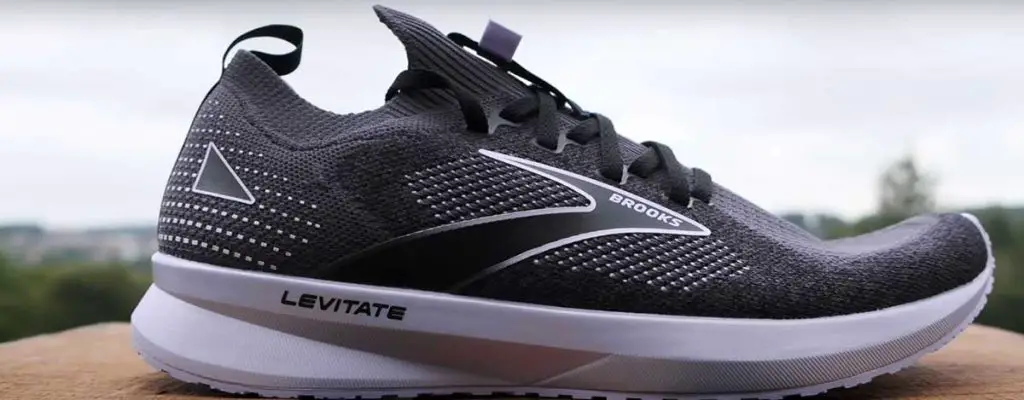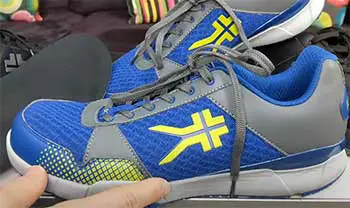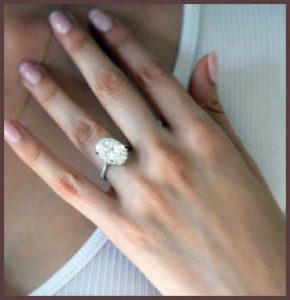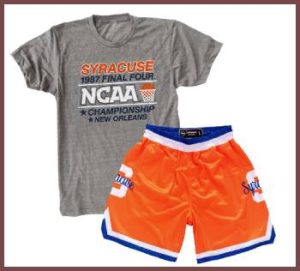KURU and Brooks are two popular brands of athletic and casual shoes designed with foot health in mind. But with different features and technology, deciding between KURU and Brooks shoes ultimately comes down to your specific needs and preferences.
This comprehensive guide compares KURU and Brooks head-to-head, so you can find your perfect fit.
A Brief Comparison Table
| Aspects | KURU | Brooks |
| Ideal Use Cases | Athletic shoes for plantar fasciitis and everyday wear, walking shoes | Running shoes, athletic shoes for cross training |
| Key Technologies | FISSION Technology for soft impact, FORM technology for ergonomic fit | BioMoGo and DNA cushioning systems for soft landings |
| Price Range | $59-$139 USD | $100-$200 USD |
| Notable Features | Antimicrobial copper linings, wide toe boxes, focus on plantar fasciitis relief | Adjustable support and cushioning, high energizing technologies |
Also Read: Reasons For Pikolinos Shoes So Expensive.
As you can see from the overview, while both brands prioritize comfort, KURU tailors its shoes for relieving foot pain issues like plantar fasciitis while Brooks emphasizes responsiveness and energy return for athletic activities like running and cross training.
Delving deeper into the key differences and similarities will give you a better sense of which brand’s DNA best matches your needs.
Cushioning and Shock Absorption Comparison

Proper cushioning goes hand in hand with support when choosing the right athletic shoes.
After all, you want softer landings without losing energy return.
KURU shoes feature the brand’s exclusive FISSION midsole technology.
Combining a soft foam compound with extra volume, FISSION soles compress gradually for low-impact absorption you’ll feel.
Along with antimicrobial copper linings, KURU shoes provide exceptional cushioning tailored to foot conditions like plantar fasciitis. Those recovering from chronic heel and arch pain need plush comfort without losing stability.
Comparatively, Brooks uses its signature DNA LOFT cushions or the BioMoGo DNA midsole for adaptive padding that responds to your weight, gait and pace. Brooks also offers a Hypromellose midsole for flexibility and Trigon rubber outsoles with cushioning lugs.
Together, these technologies allow smooth transitions, soft landings and consistent energy return during intense training and long distances.
So if you mainly need relief from nagging foot pain, KURU’s highly cushioned FISSION soles bring welcome comfort. But if you seek a responsive, energized ride for athletic challenges, Brooks’ adaptive cushioning dynamically supports you mile after mile.
Also Read: Differences Between J.FitzPatrick And Carmina Shoes.
Stability and Support Comparison
Considering many chronic foot pain conditions stem from overpronation and fallen arches, stability plays a crucial role in choosing the right athletic shoes.
KURU shoes promote stability through comfort. Strategically placing ultra-soft FISSION foam in the midsole helps correct overpronation issues gently. A molded stabilizer cup surrounds your heels for improved shock absorption as well, complementing the antimicrobial copper liner’s compression fit.
By contrast, Brooks emphasizes adjustable support technologies like its “Caterpillar” Crash Pad or innovative GuideRails Support System. Together, these biomechanical marvels provide dynamic support by controlling excess motion in real time.
So Brooks shoes feel both stable yet unrestricting during intense training. Those requiring extra stability get both guidance and feedback for correcting form issues related to overpronation.
Therefore, KURU’s stability stems from strategic cushioning placement while Brook’s adaptable systems offer proactive, customizable support. Those with stubborn overpronation can benefit greatly from Brook’s dynamic support technologies.
But for mild to moderate issues, KURU’s simplicity brings adequate relief too.
Traction and Grip Comparison of KURU And Brooks Shoes

Traction determines not only performance but also injury prevention. Proper gripping reduces slippage while allowing smooth transitions through the gait cycle. And navigating various outdoor surfaces places high demands.
In KURU shoes, you get single-density rubber outsoles with traction lugs or patterns for basic grip. The Chicane model utilizes a trail-specific lug pattern while the Saga hiking shoe features a Vibram outsole for advanced traction. Overall, KURU primarily focuses on cushioning over trail-blazing traction.
Comparatively, Brooks utilizes high abrasion rubber enriched with silica for durable, adaptable traction. Many Brooks models also have segmented crash pads aligned to the strike zones in your soles.
Together, these features allow flexibility while resisting wear from repetitive pounding. Popular options like the Adrenaline GTS 22 and Ghost 14 ensure reliable traction for road running while beefier models like the Cascadia 16 supply rugged grip across technical trails.
So if you mainly exercise outdoors on pavement, KURU delivers sufficient traction to get the job done. But hardcore trail runners and triathletes need Brooks’ specialized outsoles for ultimate grip across varied terrain.
Also Read: Differences Between Glerups And Giesswein Slippers.
Sizing and Fit
An ideal fit balances snugness for support while allowing sufficient room to prevent pinching or blisters. And finding that harmonious balance often requires trying several sizes.
KURU emphasizes ergonomic comfort through its FORM technology. Strategically designing the toe boxes, midsoles and linings contours each model to match your feet’s shape. This custom shaping provides a glove-like fit for tailored comfort right out of the box. Many KURU models also come in wide sizing options to accommodate extra volume.
By contrast, Brooks utilizes a unique 3D Fit Print system to tailor the mesh uppers. This flexible support “skeleton” integrates with the cushioned sole to create a dynamic fit. Though not fully customized to your feet initially, Breaking-in molds the materials to your foot shape. And for further adjustments, most Brooks models include an adjustable midfoot saddle and asymmetric lacing.
So if want instant comfort from the start, KURU’s ergonomic FORM technology brings a truer customized fit. But thanks to Brooks’ tunable features, patient runners can potentially achieve an equally harmonious fit over time.
Style and Colors Variations

While technology rightfully garners attention, style still counts too!
After all, athletic shoes easily transition into daily fashion wear these days. And the colors you choose reflect self-expression.
Known for sleek, modern designs, KURU shoes utilize interchangeable heel tabs, recycled materials and other contemporary touches.
Ranging from versatile neutrals like black, white and gray to eye-catching hues of blue, purple and red, KURU style strikes an impressive balance between trendiness and timelessness.
Comparatively, style plays a prominent role across Brooks’ lineup as well. Signature technologies get wrapped in fashionable meshes, suedes and knits to create sleek runners and trainers.
Alongside classic color combos, vibrant gradients, patterns and seasonal palettes adorn popular lines like Ghost, Adrenaline and Launch. And performance trail runners find equal athletic style too.
So when it comes to style and creative color choices, both brands help you strut comfortably with modern sensibilities and customization in mind. Choosing shoes that express your personal taste makes healthy exercise feel more rewarding.
Also Read: How Carmina And TLB Mallorca Shoes Compare?
Pricing Differences Between KURU And Brooks Shoes
With advanced technologies and quality craftsmanship behind them, neither KURU nor Brooks run cheap. But differences in pricing structures influence overall value perceptions.
The majority of KURU shoes cost between $59-139 USD. Using direct sales over brick-and-mortar stores helps KURU keep prices exceptionally affordable. And frequent sales promotions allow you to save 25% or more easily. While not the cheapest on the market, KURU’s below average pricing makes therapeutic comfort more accessible.
Brooks footwear spans a wider gamut, ranging from $100 up to $200 USD typically. Though costlier than KURU models with comparable technologies, Brooks invests heavily into continuous innovation and excellence.
So you pay a small premium for both bleeding-edge designs and long-proven stalwarts like the Adrenaline. However, Brook’s premium pricing makes their shoes more of an investment.
Ultimately KURU caters to budget-conscious shoppers needing reliable comfort for recovery or lifestyle use. Comparatively, Brooks serves passionate runners, triathletes and cross-trainers pursuing high performance exercise with adaptable, dynamic support built to last. Weigh your needs carefully here.
Which Is Best For Your Needs?

Now that we’ve broken down the key differences and similarities, should you put your money on KURU or Brooks?
Choose KURU For:
- Signature FISSION technology delivering ultra-cushioned comfort
- Strategically placed foam and copper linings easing chronic foot pain like plantar fasciitis or overpronation
- Ergonomic molding matching feet shapes for personalized comfort
- Impressive style and colors complementing casual or light athletic use
- Below average pricing with frequent 25%+ discounts
Choose Brooks For:
- Adaptive BioMoGo or DNA LOFT cushioning responding dynamically from stride to stride
- Innovative support systems like GuideRails minimizing injury risks from poor running form
- Specialized outsoles gripping pavements and trails tenaciously
- Bleeding-edge performance innovations satisfying hardcore runners and triathletes
- Premium quality backed by name recognition and years of proven results
So choose KURU primarily for lifestyle comfort and pain relief technologies. But join Team Brooks if you want dynamic athletic footwear built to energize hardcore training. Either way, keep your feet healthy and happy hitting the road or trail!
Also Read: How Florsheim And J&M Shoes Compare?
Frequently Asked Questions (FAQ)
Yes, many podiatrists recommend KURU shoes for patients suffering from plantar fasciitis, overpronation, and other common foot pain conditions. KURU shoes feature ample cushioning and stability technologies designed specifically to relieve pressure on the plantar fascia and provide arch support. The custom molding and wide toe box also earn praise from podiatrists for allowing proper alignment and comfort.
Overall yes – KURU is highly regarded as a comfort footwear brand ideal for casual use, walking/hiking, travel, and lifestyle athleisure. While not specialized for intense training like Brooks models, KURUs earn appreciation for signature technologies like FISSION cushioning that relieve common foot pain issues exceptionally well. The ergonomic molding also personalizes the fit. So for recovery or lifestyle needs, KURU rates as an excellent brand.
Many podiatrists recommend Brooks athletic shoes for runners because Brooks packs innovative features that promote proper form, dynamic arch support, and responsive cushioning stride after stride. Technologies like GuideRails minimize risk of injury from overpronation or poor mechanics. And cushioning systems intelligently adapt to the runner’s weight, pace and more. So hardcore runners stay supported and energized mile after mile.
With regular wear, KURU shoes typically last around 1 year or 500-600 miles. But many last even longer thanks to high quality materials like antimicrobial copper and molded stabilizer heels. Compared to intense running shoes, KURU’s relaxed pacing and comfortable technology extend longevity a bit more. Just remember to rotate pairs to evenly distribute wear and tear. Replacing insoles each year helps too.
In Closing
Hopefully this comprehensive comparison of KURU vs Brooks shoes eliminates any lingering confusion. Keeping your personal needs and activity levels in mind helps shortcut the decision.
Both brands craft exceptional footwear devoted to comfort and support through advanced technologies and innovative designs. Now confidently choose the option keeping your feet feeling their best every step of the way – whether road, trail or lifestyle in between!



